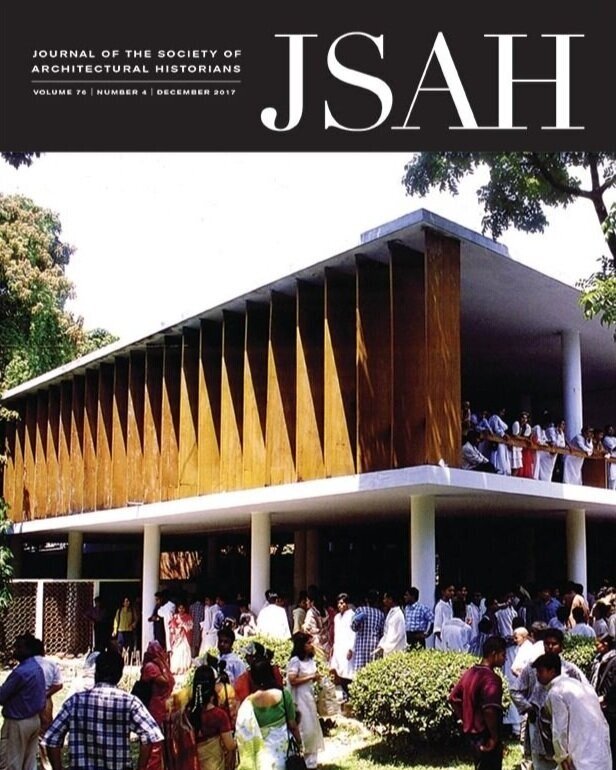Mies’ design became famous: an “icon”—an ontological distillation of a key thrust of architectural Modernism. Mies’ building lasted for only about 8 months, yet it continues to penetrate and have hegemony over architectural imaginations to this day. It did that via a handful of photographs and a couple of drawings—and it’s a testament to the power of the Mies’ concept that the Barcelona Pavilion has remained relevant for nearly a century, even on such thin evidence.
Later in Mies’ life, he was asked about rebuilding the Barcelona Pavilion, and he’s reported to have thought that it wasn’t a bad idea, and—-as the original construction drawings had been lost—he mentioned that his office could cooperate by making drawings for it. But, during Mies life (1886-1969), nothing came of the project.
In the mid-1980’s that changed: between 1983 and 1986 the building had been permanently rebuilt—and on the same site it had originally stood.
Very few of the people who’d be the most interested in the building—the architectural community—had a chance to visit the Barcelona Pavilion when it was briefly extant (and obviously none after its destruction). So the rebuilding has been celebrated, as it has allowed one to finally experience, in person, what they’d read about, studied, obsessed over, and dreamt of. [Paul Rudolph made a visit, which he found highly moving—and which you can read all about, here.]
Even though the reappearance, “in the flesh”, of the Barcelona Pavilion has benefits, its rebuilding has also been not without controversy—and it has brought forth serious questions:
Could a truly accurate rebuilding be done without the original architect’s direct involvement? [Which was clearly not possible in this case, as Mies had passed years before the rebuilding project even started.]
Even if Mies had been involved, would he have made changes in the a rebuilt design?—and how would that affect its authenticity. [Paul Rudolph observed that many things he saw at the site were not architecturally “resolved”—and that, Rudolph thought, was part of its magic. That imperfection may be “par for the course” with a rapidly planned and constructed, temporary exposition building—-but the temptation to “fix” such things, later, might have been too much for anyone (especially Mies) to resist.]
An important part of the experience of the Barcelona Pavilion was the effect caused by the materials used: slabs of natural stone—including some personally selected by Mies. These had been destroyed or dispersed, when the building was demolished in 1930. [How could one know that the newly chosen materials truly matched the originals in tone, grain, color, and texture?]
How much documentation was actually available, in order to do an accurate rebuilding? [In this case, while valiant attempts were made to sift for all documents and archeological evidence, there was still a significant gap between whatever original information was found, and what had to be extrapolated.]
Are there things that are better left in the realm of the imagination, and which should not be materialized (even when we have the power to do so)? [Philip Johnson—THE long-time associate, expert, and evangelist for Mies—said of the rebuilding project: “The problem before us is should a dream be realized or not? We have made such a myth of that building. Shouldn’t it be left in the sacred vault of the memory bank?”]
These questions remain—-and they are pertinent today, as we are, more-and-more, presented with new building projects which, allegedly, intend to rebuild, recreate, reproduce, or restore something that has been lost.
One problem is that the the thinking and language around these questions has become elastic, slippery, and with elusive meaning or intent. There is a lack of rigor in preservation—-not in the professional field, per se (about which we have immense admiration—-more about that below), but in the way that claims of preservation have been made which seem questionable. Making the situation even more difficult is that all this exists in a troublesome (and troubling) larger cultural context…
A REALITY / TRUST DEFICIT









































![A chart from the Pew Research Center’s study of Public Trust in Government: 1958-2019 The overall downward trend, from 1964 to the present, is evident. [Note that the largest and steepest drop was in the wake of the mid-1970’s Watergate scandal.] Wh…](https://images.squarespace-cdn.com/content/v1/5a75ee0949fc2bc37b3ffb97/1616438220772-C9X7PWXIHIW0L7MK9ZX1/trust%2Bin%2Bgovt.jpg)
























































